Linda Maye Adams's Blog, page 25
January 11, 2021
The Words We Say to Ourselves
This was something that emerged from a “deep dive” annual review of the 2020 course that I took. I wanted to do the course not to fix a problem but understand what I wanted to do in the future. It was so much more than that.
One of the huge lessons learned out of this was how important it is to treat yourself well. It’s not just eating right and exercising regulations, but the things you say to yourself.
I’ve been talking a lot about that here, with my battles with the inner critic while I work on the Great Challenge, a short story a week. As part of the review, I made a list of all the stories I wrote in 2020, which included 16 short stories and 3 flash fiction. It was amazing to list all those and remind myself about the fun I had and the accomplishments I got with them. Teddy Bear Man won Silver Honorable Mention in Writers of the Future.
It’s too easy to focus on the negative, what went wrong, what I didn’t do. It’s not as easy to focus on the good.
On one of the stories, Giant Hunter, I got stuck and had to go to Plan B. I didn’t think I was going to make the deadline—and I didn’t want to fail on Story #7. Yet, I found a way around the problem and completed the story. It’s on my list. I had to make sure I didn’t start thinking negatively on that one.
All of this inner critic starts early in our lives. We get it in school, sometimes from well-meaning people who aren’t thinking through the impact of what they’re doing. I think those are the worst.
I was a terrible student when it came to physical fitness. I didn’t know it, but I had flat feet that didn’t look like flat feet. Since the feet are the foundation for the rest of your body, this makes a lot of exercises pretty hard to do. I was a clumsy runner, and terribly slow because of the amount of effort my feet were forcing on the rest of my body.
One time, we did bean laps around the field. You run one lap, the teacher gives you a bean. When time is called you count all your beans. I always had the fewest of all the girls.
They were probably trying to encourage more exercise by peer pressure. Instead, the inner critic moved in because I wasn’t going to be any better than what I’d done. I didn’t have any way of knowing why (a trend that continued into the Army, which also did a lot of the same things).
So early on, it becomes very easy to focus on the negative things and not on the good. You see this with writers all over the place.
They blast their writing, saying how terrible it is. This leads to all kinds of craziness:
A writer finds a typo in their just rejected short story. Convinced that this is the reason for the rejection, they seek perfection on their stories and cringe at the smallest typo.Every time they get a form rejection for a short story, they revise it before submitting it again.
Every time a reader posts a review on Amazon, they revise their novel to address the review.
It really takes a conscious shift to not think like that. You have to be aware of the negative thinking, and also the emotions that trigger it. You might have to work on resolving those before you can get out of the negative thinking.
In the early indie days, I was wrestling a lot with a self-caused problem that snowballed into many other problems. All of it resulted from reactive decisions to “fix the problem” that I made without understanding what was happening.
I took a writing class from Bob Meyer because, as I told him, I needed some way of dealing with my “screwy writing.” I’d resigned myself that my writing was going to be a mess and that it was a function of my writing process.
He told me not to put down my writing because there are so many people who will do it for you. That’s very true. As a panster (a writer who doesn’t use outlines), I’ve gotten a lot of negative comments—story unseen—about my not using an outline. That trend has slipped into negative comments from the writing into the dark crowd. Everyone will tell you you’re wrong.
The only thing you can do is keep from saying those to yourself.
—
And here’s what I wrote on all the stories from last year:
Mask Pretty: My first story in the Great Challenge and I used emotion as the focus. I got it done within the initial deadline I wanted (Sending it in started the challenge). It was in the final 31 for Kevin J. Anderson’s Unmasked. Ends the year in submission to a contest.
Teddy Bear Man: Another story that worked the emotions in a fantasy world with ghosts and uses Havliah’s house. Story received a Silver Nomination from Writers of the Future, my best level yet (I have four Honorable Mentions).
Hunted: This was a redraft of Sasquatch-Woman, which I retired because it had something wrong in the middle. The story turned out to be very different and a lot stronger.
The Patron: This was a redraft of Sky Hair. Completely different direction, using AI and blending it with art. A fun character piece.
Spooner’s Cove. An attempt for an anthology call using a redraft of Monkey River. When I finished it, I realized it hadn’t hit the anthology theme strongly enough.
Lake of Whispers: A character piece for the same call, about a house on a boat on the shore of the lake. The idea was based on the house mover who put his house on a boat and got into problems when the county objected.
Giant Hunter: I started with a different story, a science fiction on long life. I tried scene after scene and couldn’t make the story work. Wednesday, I called it and started a new story. I put a dog and a man in an urban fantasy story and added a giant. Breathed a sigh of relief I got this done.
Malice in Morro Bay: My first cozy mystery. It has little plot, and a lot of characterization, Hollywood, 1940s, and dogs. Lots of fun to write. I was shocked when it turned into one of the longest stories I’d ever written. It amazed me that even despite the length and time it was taking, I wasn’t worried about finishing it on time.
Death at the Fair: I liked the characters so much that I wrote a second cozy fantasy, based on passing research I ran across while I was writing the first.
Murder on the Set: Story #3 in the cozy series. Since I have an actor, I plopped a film crew in Morro Bay, right on the beach. Lots of fun because there was some pretty awesome stuff I learned about why silent film stars didn’t make it to the talkies. It was learning how to act all over again!
Mayhem in the Library: I thought of Scooby Doo and the haunted house. Research made me go ah-ha and I used Prohibition and booze in the story. That was such a nice way of using my knowledge.
King’s Port Clash: This was my first sword and sorcery. The skills I worked on was to blend the action and pacing with characterization.
Campfire Terror: Back to urban fantasy again and the dangers in the darkness. This pulled on my campfire class a few years ago. Working the action, pacing, and characterization muscles again.
Ship of Dread: Heard on a Science Channel about a map that said “Buried Ship,” so this story was the launch of that. I was really glad I’d been on a tall ship. Made so much of a different building the interior of my ship. I realized that I had spent too long in the opening getting the characters to the ship and not enough on the ship. First for this: I realized the problem as I finished the first scene. I added a note. The next day, I started writing as if I were doing the onboard scenes. Then I removed the coming up to the ship parts. Worked well.
Hawk’s Landing: This was the longest of the sword and sorcery, initially weighing at 5700–and the longest story to date. A different entry than the other stories and from the male character’s POV. After I did the story, I highlighted all the “was”es, of which there were 68. Then I went through and eliminated them, and some extraneous scenes. Zap, zap, zap. It went down to 18 instances of was and was at 5,200.
Temple Terror: Inspired by a commercial of the Volcano God. One of the characters is doing this mission out of guilt to a dead friend who he doesn’t realize manipulated him.
Treacherous Cliff: A 250 flash fiction and I nailed all the elements. That went to Alfred Hitchcock’s contest (still out. I have a previous Honorable Mention for this).
Broken Agreement: Flash fiction redraft of green cats (another story I wrote several years ago), except with a dog. I saw the title and couldn’t remember this one at all and had to re-read it. 250 words.
The Bridge: Also 250. I remembered Josh Whedon’s blond girl who looks like a horror movie victim and she’s the one that’s the bigger threat. Add a bridge and mayhem happens. Horror.
And it felt wonderful writing about all these stories I wrote and the fun I had writing them.
January 10, 2021
Great Challenge Story 18 & How I Did Historical Research
Inner critic got involved before I started this story. There was a place where it did have a job, which was scheduling. I’m finishing up an all-day weekend class on the Annual Review, so I knew ahead of time I would lose that as writing time.
So inner critic thought the story should be kept simple, another sword and sorcery with the same characters, had an idea for one (marsh monster).
Muse went “Nope. I’m bored. Mystery.”
I panicked a little with the idea of a mystery. I love reading mysteries, it was the first type of story I ever wrote. But after Desert Storm, dark places moved into me and my stories for many years. I pushed those out, but now when I think about writing about a murder, I get an immediate reaction to showing that violence.
But mystery it was, and I jumped into the deep end of an off-screen murder. The story was part of my Al Travers’ series, set in 1940s Hollywood. It was called “Last Gamble,” weighing in at 3,600 words.
Inspiration: Rainy night in Los Angeles.
The Research
Until 2018, I never thought I would be able to do a historical mystery like the book that spawned this character, Golden Lies. Every blog around talks about spending a year researching in laborious detail, documenting sources, checking everything three times…
Ugh! Even inner critic wanted nothing to do with that.
I took a class on researching for fiction. The main focus was on making sure the story “feels right.” I read a historical mystery last year, set in the same era, where the writer’s nod to making it historical was to have the character wear a fedora. I could do better than that.
For the Al Travers’ book, I started with what I already knew:
1. I grew up in Los Angeles in the 1970s and 1980s. I reasoned out that I could probably talk 1940s about the city with on the spot research. Most of its huge change came after those years.
2. I grew up living and breathing Hollywood. I had a favorite actor and I researched every book I could find to see if he was in it. I discovered that reading about films and TV was pretty interesting. So my childhood non-fiction reading was books like Making a Monster and how movies were made. As an adult, I read Robert Wagner’s three books on Hollywood. He’s a fanboy of Hollywood and the books were a lot of fun.
What I already had:
1. The Catherine Mayfield series is set in the same era, so I had a small stockpile of research materials that I could hit for quick review. I’ve been building a curated Evernote file of information I can refer back to or use for inspiration.
The research itself:
1. During the first scene, I bounced back to Golden Lies to pick up some main character facts for the story (type of hat he wears. I did not want to follow the standard of him wearing a fedora).
2. I also dropped into Evernote for the colors women wore. Since I’d already visited this page more than once, I’d already bolded the sections on colors, patterns, and materials. So it only took a minute to find that. In this case, a search for “1940s” got me back to what I needed. If you want to do historical, visit that site for all the wonderful articles on fashion.
3. As I worked out the second scene, I visited sites on Griffith Park. This was where most of the heavy-lifting on the setting was going to be. First up was to see what mountains were around it. This was something I never would have known as a kid, so an on the spot check to find the answer. Little things like major landmarks can add instant recognition to the setting. For this, I didn’t add the articles to Evernote. They just contained basic information and nothing that stood out for future use.
I thought about putting the scene near the Griffith Park Tunnel (which you’ve seen in many TV shows and films), but I couldn’t pin down when it was built. I probably could have if I spent a lot more time hunting for it, but it wasn’t worth the effort. I adjusted my thinking of the setting instead. Using my knowledge of the area, I made a landmark of a rockslide. Then some research on the plants and animals and the Hollywood sign (I needed the name of the mountain it was on). For the animals, I settled on personal experience with one of the five senses: A skunk.
4. Back for another round of on the spot research for clothes again, this time the colors for men’s dress shirts. Sure, I could have put white in there, but I wanted to make a little effort being different. That was also in Evernote. This round, I bolded the section on the shirt colors so I could reuse it later.
5. Last on the spot research for a scene near the end. I went back to the article on women’s clothing for another woman character. But I wanted to do to pick up the sense of smell again, so I checked out 1940s perfume.
I probably didn’t spend more than 30 minutes of research. I saved time because I stored some of the common information I use in Evernote, so I didn’t have to search for it again.
January 6, 2021
The Patron
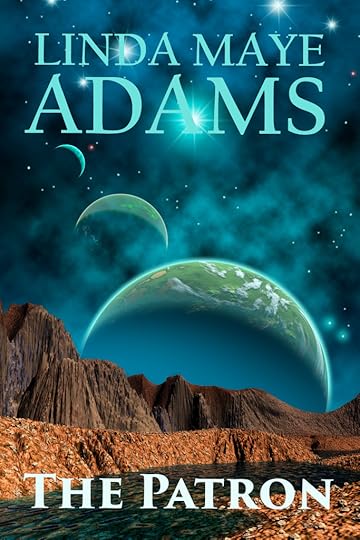
Facing ridicule and anger, painter Aurora Long flees to an artist’s retreat paid for by an anonymous patron.
Her transgression? She refuses an artificial intelligence implant.
Without it, her career may die. But it may be Aurora’s last chance. Does she dare risk everything to change her fate?
A breathtaking science fiction story on another world.
Available from your favorite booksellers.
This is Great Challenge Story #4.
January 3, 2021
Challenge Story 17 & How I Did the Research
Sword and Sorcery, weighing in at 3,600 words, called “Skull Cavern.”
I can’t say I started with an idea for the story. Last Sunday, inner critic panicked because I didn’t have ANY ideas. I still had to produce a story, so I had to figure something out.
That’s one of the biggest things about this challenge of a story a week for a year. I suppose it was the same for the pulp writers who produced hundreds and hundreds of stories so they could make money to live off of. You can’t wait. You can’t dither. You can’t get stuck. You have to produce.
So when I was hunting for temple images last week, I ran across an image of a giant skull carved out of a mountain. Having just watched a Smithsonian Channel documentary on the construction of Mount Rushmore, my first reaction was, “Why would anyone carve a giant skull out of a mountain?”
But it’s a fantasy trope, so I went with it.
The first scene was incredibly hard for me. I included a rope suspension bridge the characters have to get across. I’m afraid of heights, so this plugged straight into that fear. I had to find a way to pull the reader down into that fear but also make sure it stayed enjoyable.
Researching for the Story
It’s hard to believe I loathed research at one point. People brandishing three-ring notebooks and treating it like an academic paper just sucked out anything that would make it fun.
I started this story by using a technique that almost no one teaches—and it really should be the first thing on all those listicles out there.
Start with what you know.
Setting is the backbone of the story. Without the setting that gives me the skull cave, I don’t have a story. So I started with what I know: Northern Virginia. I live here. I’ve been all over the place, so I’ve eyeballed everything. If I need a tree, I can plop in an oak, a sweetgum, or a maple without thinking about it. A cardinal can be blood red against snow. Or a character can meet for a secret exchange at the decaying limestone lockhouses downtown.
Since the cave needed to be somewhere, I plopped it on the other side of Mather Gorge. That’s near Great Falls, which I’ve been to a few times. The gorge is where the Potomac River narrows. Lots of cliffs, swirling and violent waters below, perfect for a bit of action.
I wanted a rope suspension bridge because bad things can happen on one when a monster is chasing you. It’s also a staple of any action-adventure film. It was one of the few things I needed to see before I started the first scene. So that was a quick trip to a site to look at ten different rope bridges and pick which one I wanted. I’d never been on one, but I’d climbed a cargo net. Close enough.
Then I started writing. From there, everything was on the spot research (stop, go look something up, come back and write.)
Needed a name for two characters, and the name of the gorge. I picked up my copy of The Complete Book of Christian Baby Names and pulled names from it. I bought the book because of the preview I got on Amazon. It’s a thin book with an easy to read format and a limited number of names.
Distance across Mather Gorge. I could have probably tossed in a number, but I thought having the real thing was better. I saved this page into Evernote.
Luray Caverns. I’ve been out to see the caverns (highly recommended if you visit), as well as the Shenandoah Caverns. But it’s been more than a few years, I needed a joggle and some telling details. Off to the official site and a 4-minute video. No Evernote for this page. If you’ve got a few minutes, watch the video. Pretty cool looking around the cave at all the formations. I’ll have to plan for another in-person visit.
As I headed into my climax, I circled back to Mount Rushmore to refresh my memory on how they carved the faces. I only wanted enough that I could translate it into someone doing that with magic. This was a piece of the cycling I did while I was drafting. I wasn’t sure until the monster showed up what it would be or how the characters would kill it, so that happenstance of seeing the documentary turned out to be important. Also added this to Evernote, though only the page about the construction, not the rest of the article.
This was about thirty minutes of research, not including the documentary.
Why didn’t I save Luray Caverns page to Evernote like the others? I actually don’t know, except that it felt right not to do it. My collecting the information is not about fear of missing out on something but rather on pages that interest my muse.
December 27, 2020
Great Challenge Story 16
The inner critic jumped right in at the idea level on this story. I suppose it had to happen, but still…
The idea came from a Science Channel commercial for “Mysteries of the Volcano Temple” (it’s in Rome) Volcano Temple was seriously cool. Perfect place for an action story in my sword and sorceress series.
I even decided before I was going to write the story that it would be called Volcano Temple.
That should have been a sign of the problem. I’ve been calling these “Story 14,” “Story 15,” etc. until I’m almost done. That way I don’t invite the inner critic in for a stay.
Yeah, well.
I started on the first scene. It wasn’t until I was trying to describe a statue of the volcano god and figure out what to name him that I realized the rabbit hole I headed down. The whole purpose of the S&S stories to get a monster. Describing and naming the god wasn’t going to help any of that. Restarted the story, changed the POV, and concentrated more on the treasure hunt aspect of finding a lost temple.
This time, I focused on adding more details. I’m not detail-oriented, so this is a weak area for me, though I was doing better than I thought I was. Things like “he sat back in his chair” became “The applewood chair creaked as he settled his spine against the backrest.” (And gets the detail, sound, and touch.)
A lot of on the spot research for little details like that. I’m going to be working on a book on research for fiction writers in 2021, because there really isn’t anything except superficial blog posts or ones that advocate spending a year researching before you start writing. A lot of shortcuts can be done without spending years mirred in research.
The story is sword and sorcery, called “Temple Terror,” and weighed in at 3,000. Only 22 uses of was, so my effort last week seems to have made a difference.
December 20, 2020
Tales From the Depths
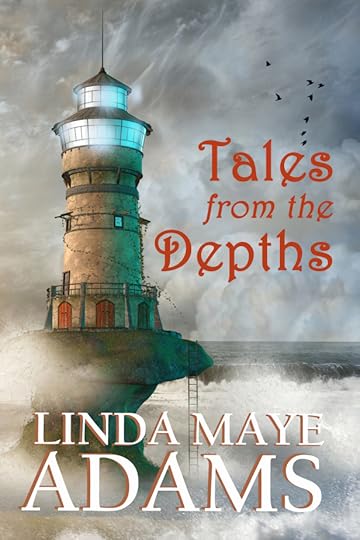
Whether by river or sea, the ominous depths fill with dark secrets. This omnibus edition features five tales of those secrets.
In Spooner’s Cove, a long ago battle on the sea now brings a growing danger that threatens everything.
In Dark, From the Sea, one woman risks everything to stop monsters from the sea.
A storm threatens a lighthouse in Keyhole Point. Magic pollutes a river in Sliver of Silver, a deadly peril.
Finally, in King’s Port Clash, a monster escapes from a merchant ship. Can magic and sword stop it before it kills again?
Available from your favorite booksellers!
Great Challenge Story #15
When I completed Story #15, it weighed in as the longest short story I’d ever written, 5,700 words. The story is sword & sorcery again, called “Hawk’s Landing.”
It was inspired by a new Science Channel series called Blind Frog Ranch. I saw the commercial, heard “blind fog,” and thought of the Tule fogs in California. Those can get so bad that you have twenty car pileups because no one can see ahead of them.
Inner critic showed up before I started writing the story. I was doing a new release, an omnibus of five short stories called Tales From Depths. I keep seeing the category of Sea Stories on all the publishing sites. So inner critic was like, “No, no, you have to write a sea story.” I already had the idea, I’d done some research (on fog and spatial disorientation), so I went with it.
After I finished the story, I gave the inner critic a job, which it very much enjoyed. Edit the story for the word ‘was.’ I saw a post from Dave Farland and thought “Why not?”
On my second draft, the major cycling pass where I do a lot of clean up, I let the inner critic loose with this.
I ran a search and replace for the word was, highlighting it in yellow. There were 66 in the story.
I ran a check for typos using Grammarly. This is just a quick step so I can save a little time during the cycling process. It won’t find everything, but it does better than the native spell checker in Word.
I started reading the story from the beginning. Most of what I did here was housekeeping. Shortening sentences, cleaning up what I call flotsam. I’m a kitchen sink writer, which means I put things into the story that might end up never being used. So out came three paragraphs about a whistle, I lost two kerosene lanterns and added one, and searched on three character names to make sure I hadn’t changed them (two I did. Sigh).
For the ‘was’ sentences, I focused on changing the wording. In some cases, I simply deleted the sentence. It was a little challenging, and something you’d do on an editing pass, not while creating.
But between it and the flotsam, the story tightened up to 5,300 words. The instances of was when I finished: 18.
December 16, 2020
King’s Port Clash
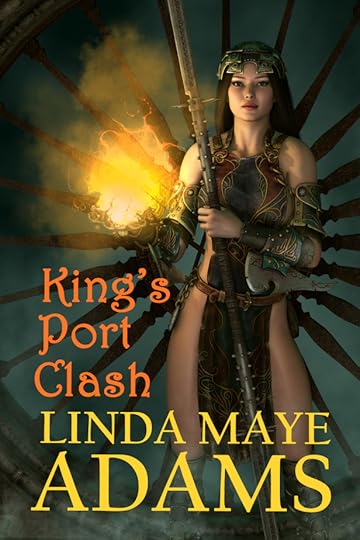
A journey to a family wedding turns deadly for retired sorceress Blythe Wayne and her swordmaster husband Gray.
The town, empty and abandoned. And some…thing awaits.
Something monstrous, and with murderous intent.
Facing insurmountable odds, Blythe must find a way to kill the monster before it kills them all.
An action-packed sword and sorcery tale that will have you turning pages!
Available from your favorite booksellers.
This is Story 12 from the Great Challenge.
Linda’s 2020 Year-End Review
I think this 2020 is the Year of Disruption. It’s shown all of us that some things can be done differently, or in some cases, maybe not needed at all.
The biggest disruption for me has been time management. I’m a writer with a day job. The day job is a travel ringmaster. I juggle multiple hats, sometimes all at the same time. At times, it’s made writing after work very difficult. There’s nothing getting home, and the work day has sucked up all your mental energy.
Stuff sometimes comes at me so fast that it was hard even figuring out how to manage all of it. As I’ve read over the last year, this is a very common problem with knowledge management workers. Random tasks come in email, often labeled urgent, and all everyone says is “Put it on a to-do list.”
I started time blocking sometime in April or so. Physically marking my work calendar in Outlook with a block of time for tasks. I’d tried it before, it but fell apart because I was too specific with the blocks. It didn’t make me feel in control of anything.
With COVID-19 pulling back on the reins of the normal chaos, I was able to practice and adjust the time blocking, something I hadn’t been able to do. What resulted was a betting balancing of energy. I’ve had to make decisions about what I can do earlier in the day versus what works better the afternoon.
Social Media
In March, I saw the writing on the wall, my Facebook wall that is. Everyone, in the attempt to be helpful, was sending out link after link after link of COVID-19 tips. Serious overload!
Add to that, I knew the media wasn’t going to have any governor on what they published. The more scandalous, the better. During 911, they had the sense to stop, but that was lost a long time ago.
So I unsubscribed to all news emails–and was shocked at how many I’d been on. I’m not a news junkie, and yet, it was more than I expected. I also stopped watching news on TV. Instead, I just referred to paper newspapers.
Then I started cutting social media. I’d subscribed to a lot of sites at one point because of a recommendation at a BookBaby Conference several years ago. Now I was deleting my profile where I could. Not all the sites allowed that, and all of them made it hard to do. I book marked the Superstars group for Facebook, and shockingly, that nearly killed off visits to Facebook entirely.
More recently, I’ve been thinking about trade-offs about posting comments on other blogs.
Once you start focusing on being professionally published, not dreaming about it, it changes your perspective. Suddenly you see how many books and sites are catering to the dreamers. Worse, these all provide misinformation!
Probably the biggest is on outlining versus not using one (pantsing). To the outsider, it seems reasonable and logical to plan out your story. It’s easy to explain how to do one for a dreamer because it can be done step-by-step. But there are also a lot of people posting that outlining as the ONLY way to write a story and dismissing pantsers outright.
If I ran across those, I always posted a comment because I got lost for a while in the outlining maelstrom. When I was on writing message boards, there was a lot of pressure to conform. With problems in my writing (from craft), I veered to it for a while, spun my wheels, wrecked a few stories. After that, I wanted to post comments because I didn’t want others like me going down that rabbit hole.
This time, when I ran across one of those posts advocating outlining a novel (a non-fiction writer), I stopped and thought about it. I asked myself about the tradeoffs:
What would happen if I did comment?
I’d spend a lot of time writing the comment, probably get frustrated, because I am tired of seeing this nonsense presented as the only way to write. I’m tired of how destructive it is.
The author might do one of two things:
Remove the comment outright (some authors want people to only agree with their point of view).
2. Tell me I’m doing it wrong.
So I decided the trade-off of being frustrated and the author’s response wouldn’t be worth the time to write the comment. There is only one blogger now I’ll post comments when the topic comes up because it becomes a discussion. I can’t even post comments of how to do things like cycling in stories anymore to expand my knowledge because the blogger informs me that’s not the correct way to do it.
I know what works for me. What everyone says doesn’t matter.
Fitness
Right at the end of March, I signed up a health coach from Nerd Fitness. I needed to lose weight and wanted an outside perspective about my eating.
But I’m glad I did because I think I would have gotten sloppy about my exercise. I couldn’t go to the gym, and probably still can’t. That would have left me just doing walking. If I’d been following a routine, I’d have gotten bored and dropped off it. Staying healthy is absolutely the single best thing I can do right now (and always)
I’ve lost 14 pounds so far and can do exercises I thought I would never be able to do.
Writing
I tried as best as possible to insulate myself from the stressfulness of COVID-19. Still, my writing dried up for the first few months. I was able to produce a short story (Backlot Deception, below) and worked on my superhero novel (still in progress).
Fifteen weeks ago now, I took the leap and signed up for the Great Challenge on Dean Wesley Smith’s site. It’s a story a week for an entire year. When I get to the end of the year, I get a lifetime subscription to workshops, so a huge value, plus 52 stories.
Teddy Bear Man, the second story in the Challenge, won a Silver Honorable mention from Writers of the Future. I’ve also written stories in two genres I haven’t tried before: Cozy Mystery and Sword and Sorcery.
But it’s been a struggle working on the superhero novel with the schedule for the short stories. I’m still trying to figure out a process where I get the stories done faster, and earlier in the week, so I can get on with the novel.
I also unofficially decided I was going to publish an ebook a week for a year (another challenge of DWS, though nothing I had to register for). My focus also included streamlining everything I could:
Creating a “Folder Template.”
This helped the challenge, too. The folder has a manuscript template, along with two folders, one called ePublishing Masters (cover and ebook downloads in mobi, epub, and PDF) and another called Manuscript Masters (ebook templates for mystery and spec fiction). I just copy the whole folder and paste it into the Project folder, rename it as “Story 15,” and away I go.
I had to review this several times, ferreting out unnecessary steps. Originally, covers were in one folder and the ebooks were in a different one. So when I published to Amazon or Smashwords, I had to keep changing the folders.
The additional books list is in Evernote, so I can update it there after a release, then paste it into the next release. That’s much easier than remembering to open the template and update it each time. I’m always in Evernote, and it’s easier to hop around the notes.
Storing an inventory list in Evernote.
Before, I’d been trying to keep track in a spreadsheet. Frankly, spreadsheets are terrible. Because of all the information I needed, it ended up being in two places. Instead, I created a template in Evernote, and store it there. I use the tags for year published, year refreshed, and genre.
Starting a note-taking system.
This is something I’ve wanted to do since the internet’s gold rush days. There are gems of information out there that might have long-standing uses. But storing it in a way that is useful to my creativity was hard to figure out. Most of the advice is just use tagging.
Instead, I found that I never used the same tag twice, often misspelled them (being a terrible typist and having trouble spelling some words), and notes simply disappeared into the flotsam. Yet, while writing my four cozy mysteries, I kept going to the same pages over and over again.
Enter the Second Brain. It’s a different way of thinking where you can use your notes to make unexpected connections. Basically, I save a note in Evernote that interests me, or that I might have to revisit. When I need it, I type a word that’s in it to find it. That’s not as hard as it sounds. With the cozy mystery, it was “1940s.”
Once I visit the note a second time, I bold the parts of the note I need so I can scan it for what I need on the next visit.
I’ve had to make decisions on what I should save versus what I shouldn’t. The topic should interest me (I find 1940s fashion fun to read about). It also should be something where I would expect to find it in Evernote later. For example, I had to do an on the spot research for one of the stories. What are the cycles of the moon? It’s such a common piece of information that I was likely to simply go back out on the internet next time I needed it. On the other hand, if I needed folklore on the moon cycles, I’d save that in Evernote because it would have some cool parts that might trigger a story.
I’ve always found notes a chore, and this has made them fun.
Finally, a list of everything I’ve published this year.

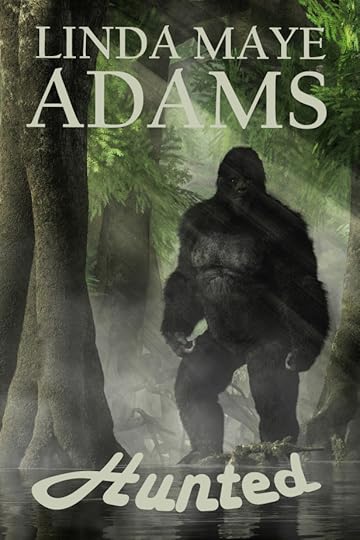
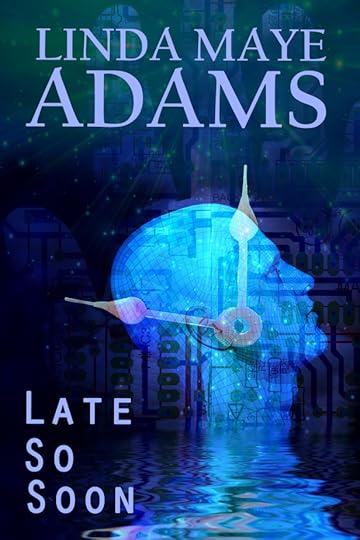
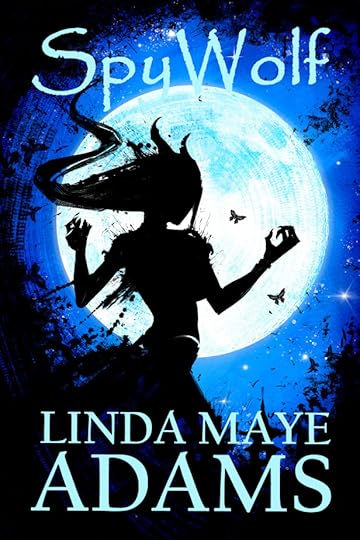
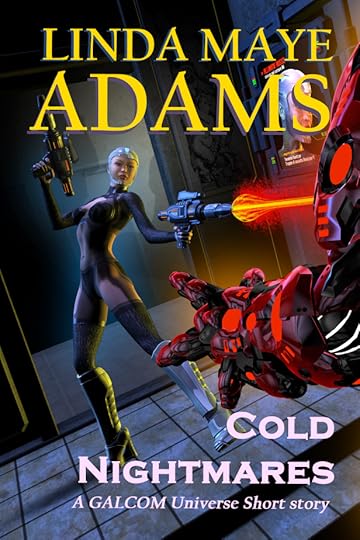
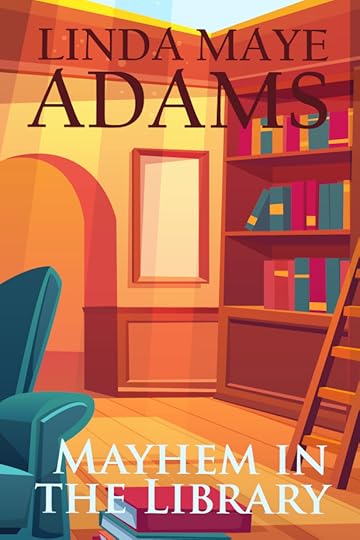
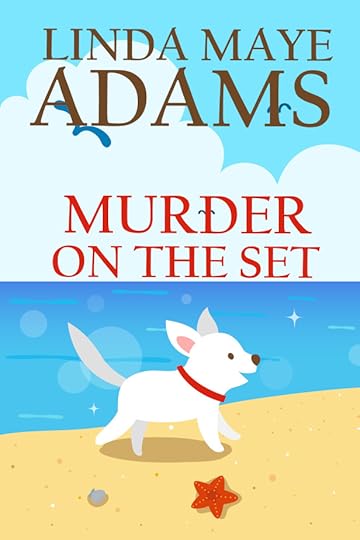
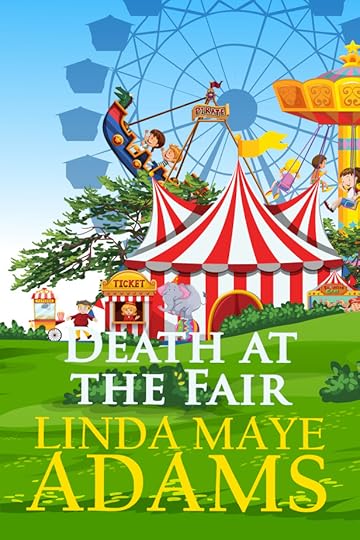
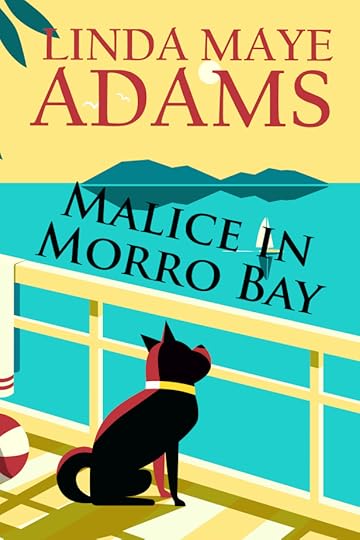
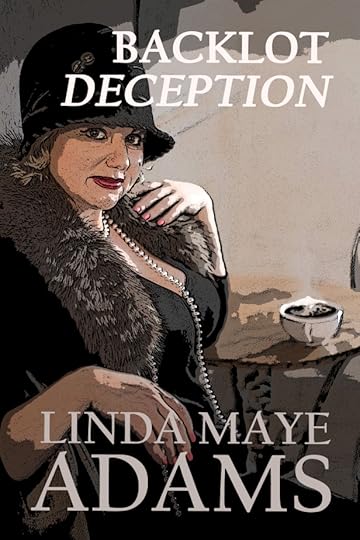
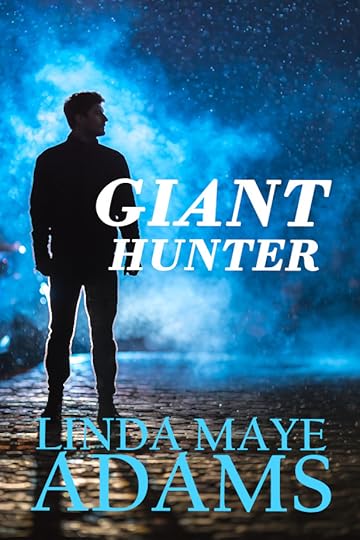
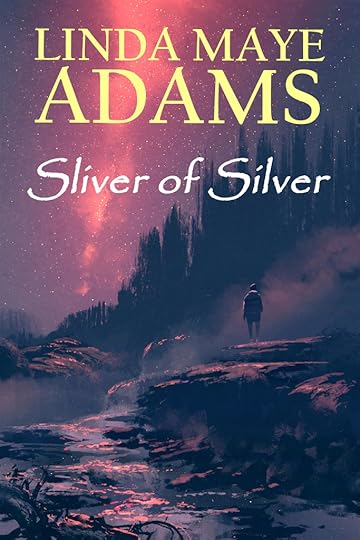
December 14, 2020
Late So Soon
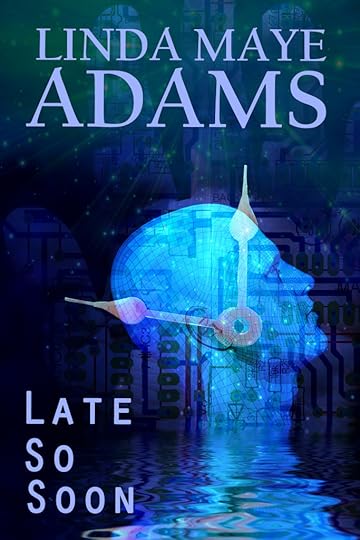 m
mSummoned by the Time Council, time fixer Cailin Russell faces an unfolding disaster.
Time shatters in Los Angeles, threatening everything.
With the odds stacked against her, she must find the source of the ruptures before more people die.
A chilling tale of time travel!
Available from your favorite booksellers!



